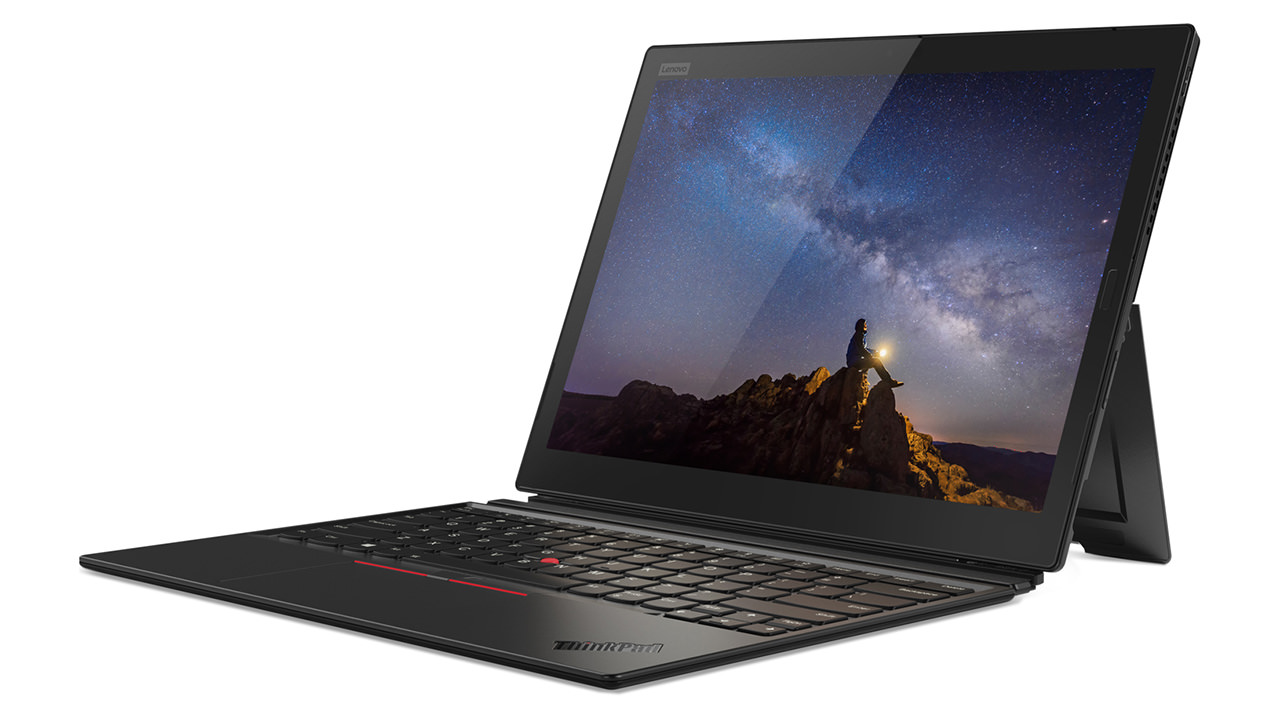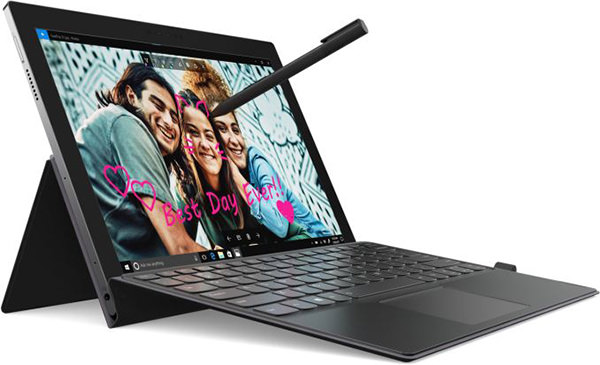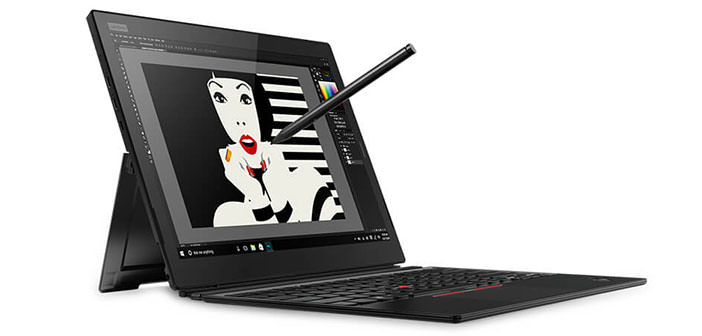Lenovo announces ThinkPad X1 Tablet and Miix 630 2-in-1
With the introduction of ARM processors on Windows, we will see some good ones. Lenovo offers a first taste of the Miix 630, a 2-in-1 with Snapdragon 835 that promises 20 hours of operating time.
Lenovo announced the updated version of ThinkPad X1 Tablet, which becomes bigger and more powerful, and the new Lenovo Miix 630 which is characterized mainly by the presence of a Qualcomm Snapdragon 835 processor with ARM architecture, adopts Windows 10 S, and promises an operating autonomy of 20 hours. This is impossible to achieve with a standard x86 processor in this size.
Lenovo ThinkPad X1 Tablet
The new ThinkPad X1 Tablet uses an Intel Core i7 processor, and not a low-power consumption variant like its predecessor, and features a larger display, two Thunderbolt ports and no longer supports expansion modules. The third generation of Lenovo 2-in-1 tablet can take advantage of a 13″ IPS LCD display at 3,000×2,000 resolution (the previous version had a 12 ” IPS and 2,160×1,440 pixels), supports a supplied pen and a multi-touch from 10 simultaneous points. Compared to the Surface Pro boasts a wider resolution and a larger display.

Inside the 8.9 mm body, we find eight-generation Intel Core processors (i5-8250U, i5-8350U, i7-8550U, i7-8650U) with integrated iGPU more powerful than its predecessors, while on the memory side we find versions maximum 16 GB of LPDDR3 RAM and up to 1 TB of storage on a PCIe platform.
The new device can count on two Type-C USB ports compatible with Thunderbolt (and DisplayPort to connect an external monitor), a micro SD card reader, and on the wireless front, we find support for Wi-Fi ac and Bluetooth 4.2. They grow slightly in size and weight, now 890 grams (1.27 kilograms with keyboard).
As stated by Lenovo, the autonomy is around 9.5 hours, and there is a webcam with support for optional IR functionality for Windows Hello. Lenovo has faced the increase of the weight of the solution with a new more robust stand of the predecessors, for a device that will be proposed on the American market starting from the end of January to a base price of $1,599 with keyboard and pen included.
Lenovo Miix 630
Certainly more interesting in terms of innovation is the new Lenovo Miix 630 2-in-1, one of the first attempts to bring a laptop with Windows 10 on the ARM platform. The device specifically uses a Qualcomm 835 processor on Windows 10 S operating system, adopts a Gigabit LTE modem and promises, according to data released by the manufacturer, a maximum of 20 hours of operating autonomy on a single charge. The form factor is that of a laptop with detachable keyboard, and is characterized by a 12.3″ LCD display with a resolution of 1,920×1,280.
 With the included keyboard, the thickness of the product is about 15.6 mm, with a total weight of 1.33 kilograms. Memory side we find versions with 4 or 8 GB of RAM, while on the front of the storage at the top of the range, we find a 256 GB NAND memory based on UFS technology.
With the included keyboard, the thickness of the product is about 15.6 mm, with a total weight of 1.33 kilograms. Memory side we find versions with 4 or 8 GB of RAM, while on the front of the storage at the top of the range, we find a 256 GB NAND memory based on UFS technology.
The 2-in-1 tablet also offers a USB Type-C port, a memory card reader and an IR webcam for face-to-face authentication via Windows Hello, and Cortana’s support is naturally also present. In addition to the LTE modem, we find support for Wi-Fi 802.11ac 2×2 and Bluetooth 4.1.
According to reports from the company, the tablet delivers a 20-hour playing time in video playback with brightness set to 150 nits, all thanks to the use of a more efficient processor compared to technologies traditionally used on notebooks.
However, the use of an ARMv8 processor also has its drawbacks: the Snapdragon 835 consumes less than an x86 processor, but can natively run only applications specifically optimized for the platform, while the software for x86 architectures is emulated.
In addition, only 32-bit x86 apps can run, while 64-bit apps are not compatible. In any case, the emulation should involve compromises on the performance front, which we can only quantify after a thorough test of the first products with Windows on ARM. When? Lenovo Miix 630 should arrive on the market in March or April at prices starting from $799 with pen included, in a price range a bit dangerous since it is already established by several similar products with processors based on x86 architectures.

